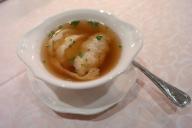In England, a study found that when 21 places stopped offering the biggest size of wine, they sold less wine overall.
The researchers wanted to see if making the sizes of alcoholic drinks smaller could help people drink less.
Let's find out more about how it works.
A new experiment
Alcohol is a significant factor in early deaths and diseases globally, and external cues can influence drinking habits.
The study focused on places that willingly took off the largest wine serving by the glass (usually 250 mL) from their menus for four weeks.

The findings revealed a 7.6% drop in the total amount of wine sold, without an overall rise in beer and cider sales.
While smaller wine servings (125 mL and 175 mL) saw an increase in sales, there was no impact on wine bottles or beer and cider sales.
Even though less wine was sold, daily revenue stayed the same, suggesting that smaller wine glasses might have a higher profit margin.
Why it's important to know
The results indicate that removing the biggest serving encouraged individuals to choose smaller alternatives, leading to decreased alcohol consumption. This presents a promising strategy for alcohol regulation considerations.
Marteau highlights that this innovative approach aligns with previous research demonstrating the efficacy of smaller serving sizes in reducing consumption, suggesting its potential to improve public health by moderating alcohol intake.
Previously, we talked about psychological problems of elderly people.









